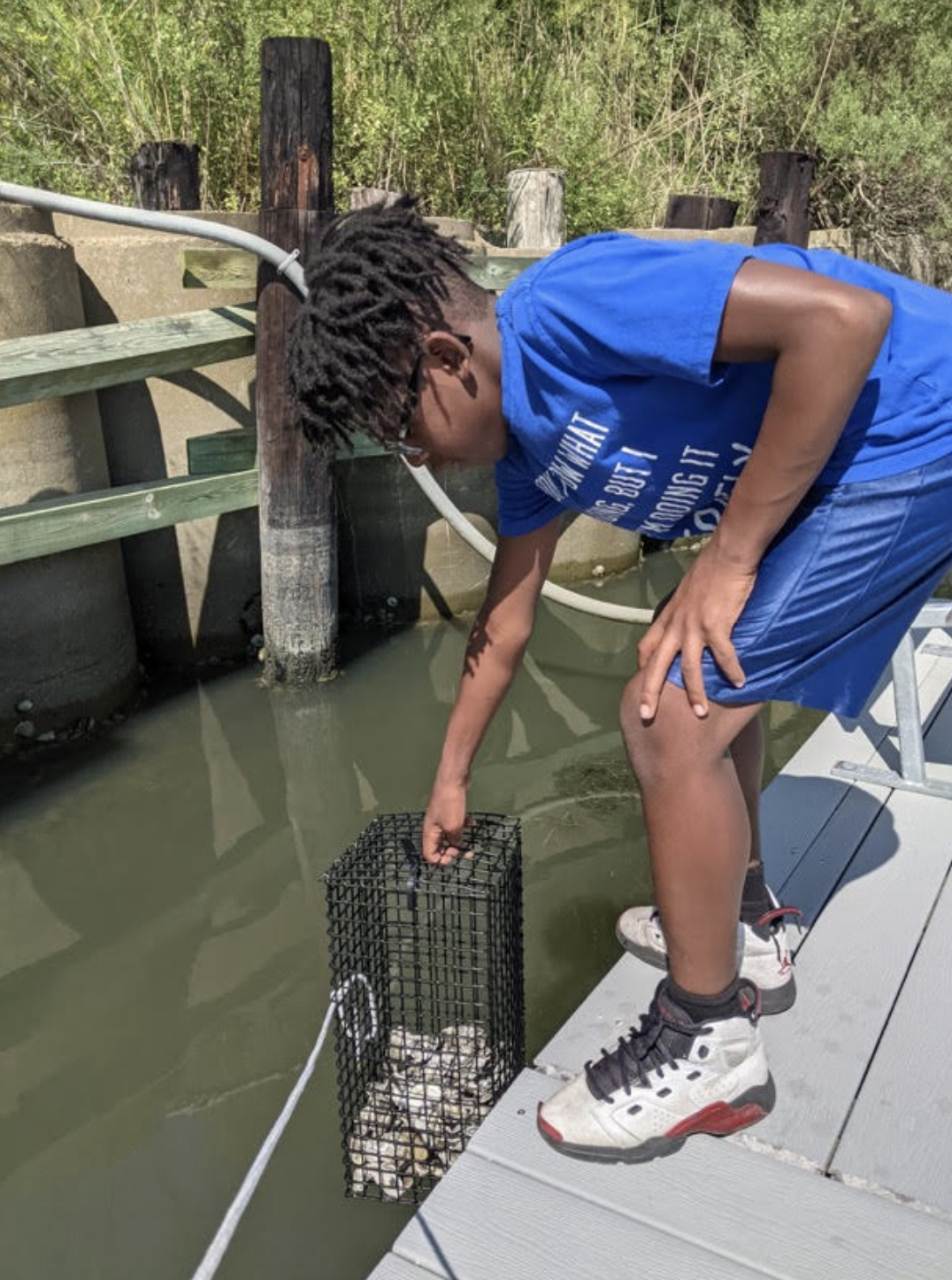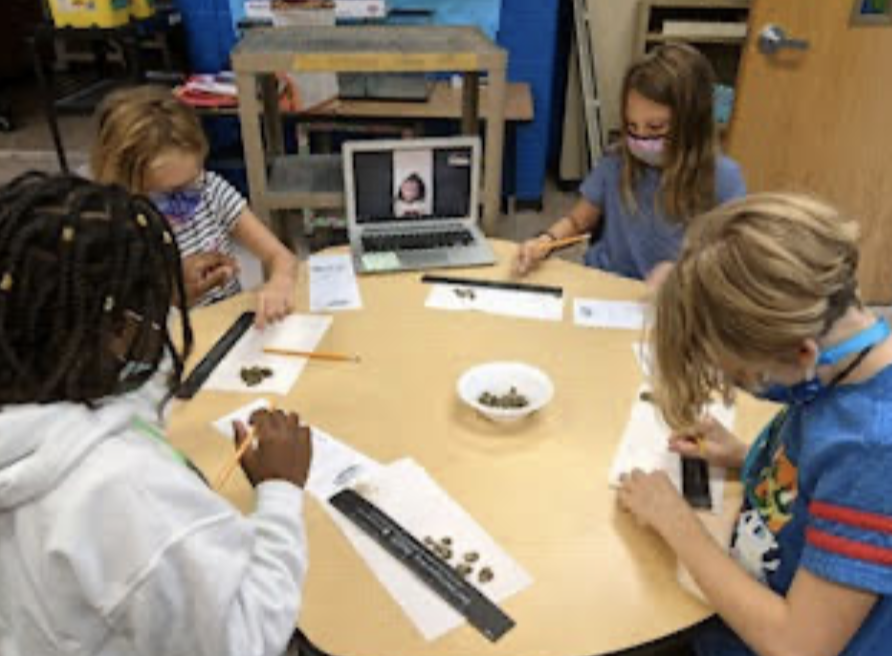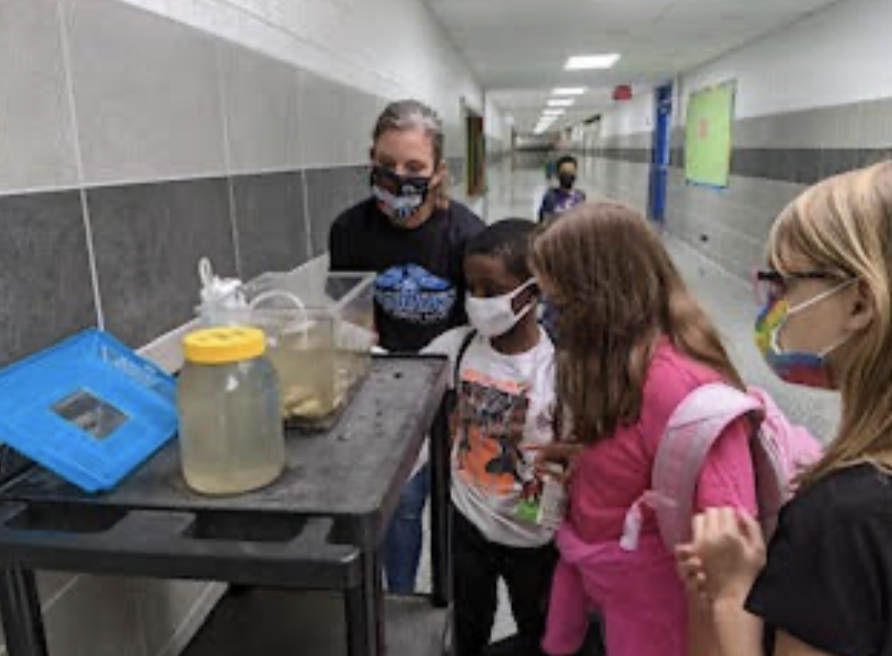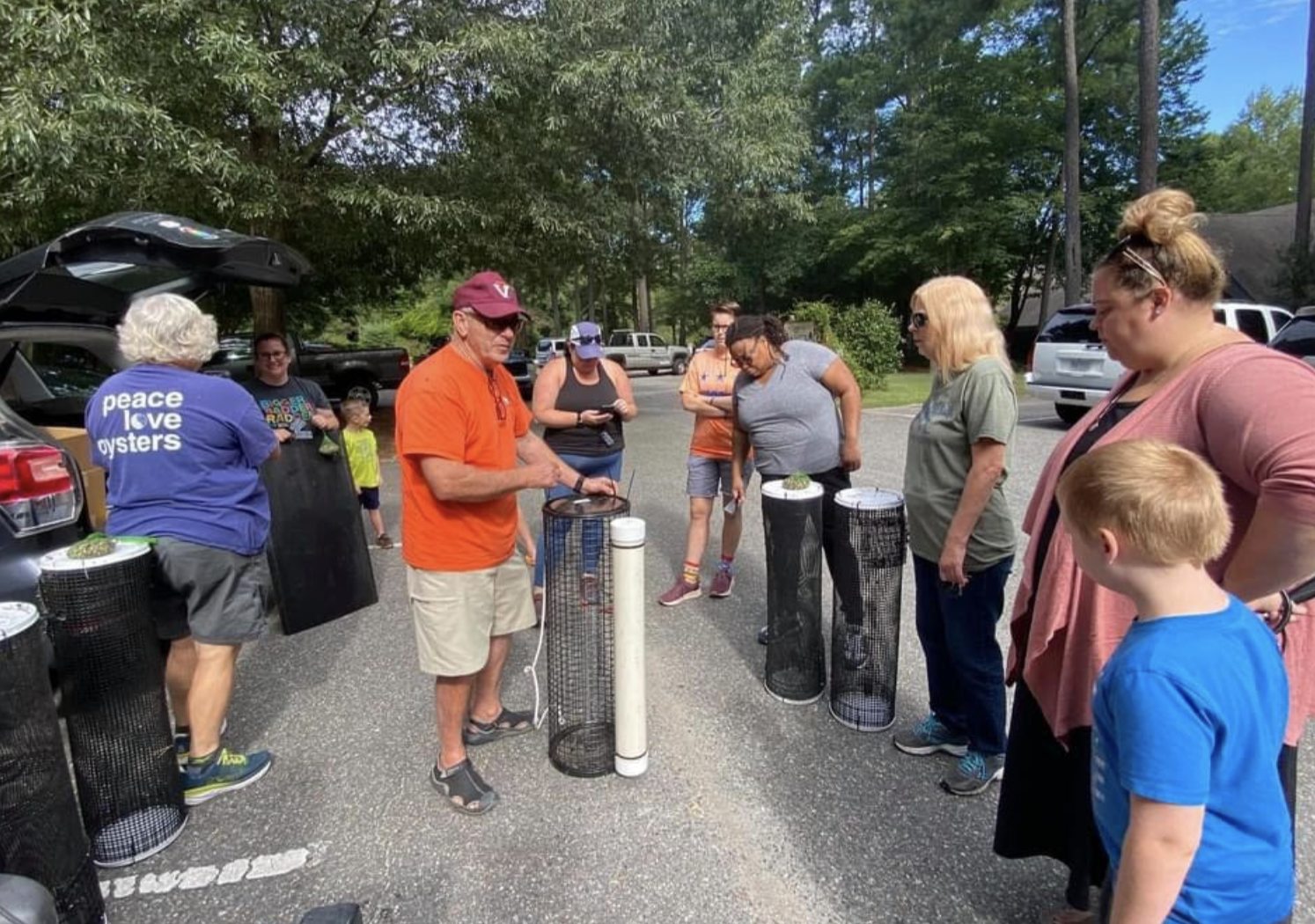HAMPTON CITY SCHOOLS EVERY CHILD, EVERY DAY, WHATEVER IT TAKES!
RETURN TO HOME NEWS & ANNOUNCEMENTS GO TO NEWS ARCHIVES




HCS teachers and students raise oysters
Where would you expect to find Hampton City Schools teachers on the Saturday morning of Labor Day weekend before the start of a new school year? For a handful of dedicated and innovative educators, the answer would be Sandy Bottom Nature Park picking up oyster gardening equipment and oyster spat (babies) from Vic Spain of the Tidewater Oyster Gardeners Association (TOGA) and the Chesapeake Bay Foundation’s Peninsula Oyster Ambassador, Claire Neubert.
Experienced oyster gardeners Jennifer Jones-Cooper (Andrews PreK-8 School), Sheryl McLaughlin (Jones Magnet Middle School), Kristen Coolbear and Margie Ware (Kecoughtan High School), Michele Ferrel (Kilgore Gifted Center), Mallary Reynolds (Langley Elementary School), Alexis Tharpe (Phenix PreK-8 School), Tirzah Sarro (Phoebus High School), and Brittany Richards (Tarrant Middle School) will all be raising oysters with their classes this year. Oyster restoration in Hampton City Schools began in 2015 with the Hampton Environmental Learning Project (H.E.L.P.) through funds made available from a NOAA Bay Watershed Education and Training (BWET) grant. Grant funding ran out in 2019, but thanks to financial and material contributions from the Tidewater Oyster Gardeners Association (TOGA), the Chesapeake Bay Foundation, the Hampton Waterways Restoration Project Committee of Hampton Clean City Commission, and the Elizabeth Lake Environmental Stewardship Committee restoration efforts will continue.
McLaughlin said she is “so excited to share in oyster restoration efforts with her students this year.”
Teachers have their oysters in floats in local waterways such as the Hampton and Back Rivers. They will bring their oysters into the classroom periodically throughout the year, such as was done this week at the Kilgore Gifted Center.
“I loved seeing the excitement of the students and how engaged they were when measuring spat and watching adult oysters filter water over the course of a day. Some students came back the next day talking about how they shared with their families,” said Ferrel.
Over the course of the year, students will learn about the anatomy and water filtering capacity of oysters, as well as the relationships oysters have with other organisms in the Chesapeake Bay. They will also learn random sampling techniques and will monitor oyster health and growth through regular observations and measurement. Students will also learn about adaptations of organisms that use oyster reefs for habitat and will practice using dichotomous keys to classify them.
Tharpe shared, “I am so excited to be able to share this experience again with students. As they learn about the things that can harm the bay, it’s nice to know that there are so many things that they can do to help – like oyster gardening. We are looking forward to raising our baby oysters.”
So why is it important that HCS teachers and students raise oysters? The health of the Chesapeake Bay is uniquely tied to the Virginia’s sate shellfish, Crassostrea virginica. As filter feeders, oysters fill an important ecological role by removing algae, sediment, and pollutants from the water. In fact, it is estimated that an adult oyster can filter as many as 50 gallons of water in a day. Not only do oyster reefs provide habitat to more than 300 other species, they also provide protection from storms, reducing shoreline erosion. Unfortunately, the Chesapeake Bay currently has 1 to 2% of the oyster population it had when Captain John Smith first ventured into the Bay.
According to HCS STEM teacher specialist Betsy McAllister, “In a very real way, Hampton City Schools teachers and students are engaged as citizen scientists solving a real-world problem while having a positive impact on the bay, the Hampton community, and beyond.”